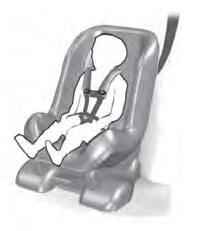Lincoln Aviator: Starting a Gasoline Engine / Guarding Against Exhaust Fumes. Important Ventilating Information
Guarding Against Exhaust Fumes
WARNING: Exhaust leaks may result in entry of harmful and potentially lethal fumes into the passenger compartment. If you smell exhaust fumes inside your vehicle, have your vehicle inspected immediately. Do not drive if you smell exhaust fumes.
Important Ventilating Information
If you stop your vehicle and then leave the engine idling for long periods, we recommend that you do one of the following:
- Open the windows at least 1 in (3 cm).
- Set your climate control to outside air.
 Stopping the Engine When Your Vehicle is Moving
Stopping the Engine When Your Vehicle is Moving
WARNING: Switching off the engine
when your vehicle is still moving results in
a significant decrease in braking
assistance. Higher effort is required to
apply the brakes and to stop your vehicle...
 Starting a Hybrid Electric Vehicle System
Starting a Hybrid Electric Vehicle System
Before starting your vehicle, check the
following:
Make sure all occupants fasten their
seatbelt.
Make sure the headlamps and electrical
accessories are off...
Other information:
Lincoln Aviator 2020-2025 Service Manual: Removal and Installation - Brake Disc Shield
Removal NOTE: Removal steps in this procedure may contain installation details. Remove the wheel bearing and wheel hub. Refer to: Wheel Bearing and Wheel Hub (204-02 Rear Suspension, Removal and Installation). Remove the 3 bolts and the brake disc shield...
Lincoln Aviator 2020-2025 Service Manual: General Procedures - Valve Guide Inner Diameter
Check NOTE: Refer to the appropriate Section 303-01 for the specification. NOTE: Valve guides tend to wear in an hourglass pattern. The ball gauge can be inserted into the combustion chamber side of the valve guide, if necessary. Use a ball gauge to determine the inside diameter of the valve guides in 2 directions at the top, middle and bottom of the valve guide...
Categories
- Manuals Home
- Lincoln Aviator Owners Manual
- Lincoln Aviator Service Manual
- Changing the Front Wiper Blades - Vehicles With: Heated Wiper Blades
- Tire Change Procedure
- Opening and Closing the Hood
- New on site
- Most important about car
Child Seats

Use a child restraint (sometimes called an infant carrier, convertible seat, or toddler seat) for infants, toddlers and children weighing 40 lb (18 kg) or less (generally four-years-old or younger).
Using Lap and Shoulder Belts
WARNING: Do not place a rearward facing child restraint in front of an active airbag. Failure to follow this instruction could result in personal injury or death.
